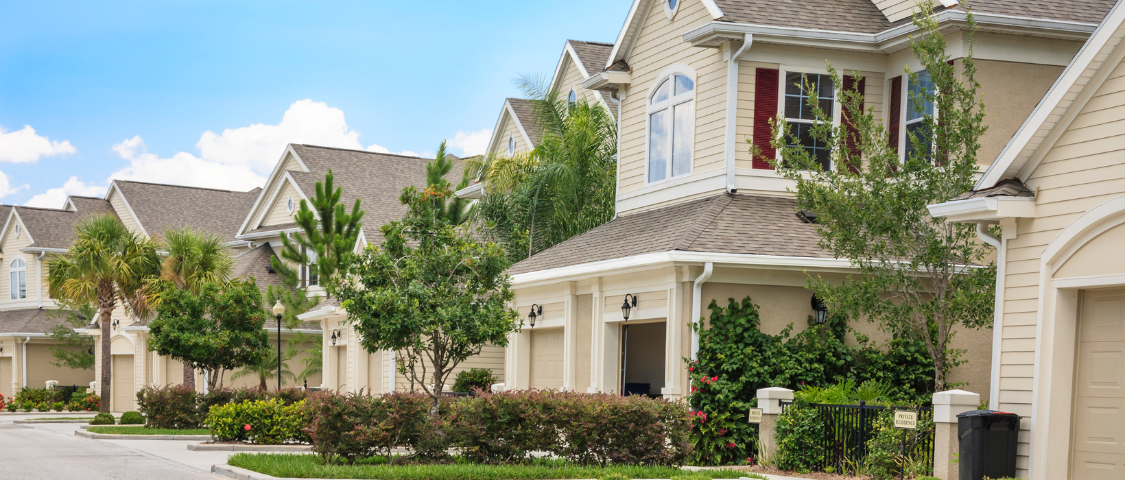
Why More People Are Moving to the Suburbs
For generations, big cities have attracted people with promises of opportunity, energy, and culture. But when the COVID-19 pandemic hit, the appeal of dense urban living quickly faded. Crowded public spaces, small apartments, and public transportation became drawbacks instead of advantages—prompting thousands to pack up and head for the suburbs.
Over the past few years, major cities have seen unprecedented population losses, while suburban markets surged. Inventory in suburban areas dropped faster than in cities, driven by a wave of urbanites seeking more space and a different pace. Still, many hesitate to make the move, clinging to outdated myths about suburban life. In this article, we’ll answer some common questions about buying and living in the suburbs to help you decide whether or not you should make the move.
Common Questions About Suburban Living
Are Suburbs Cheaper Than Cities?
While city homes have traditionally carried higher price tags than those in the suburbs, that gap is quickly closing, and in many cases, flipping. Today’s homebuyers shouldn’t expect deep discounts just because they’re moving outside the urban core. In fact, suburban home prices have been climbing faster than their urban counterparts in recent years.
During the pandemic, demand for suburban properties surged as more buyers sought larger homes, private outdoor spaces, and a quieter lifestyle. This shift in demand has driven up prices in suburban areas at a faster pace. Currently, within the 10 largest metro areas in the U.S., suburban median listing prices are rising by 5.2% year over year, compared to just 2.4% in urban centers.
Affluent professionals (from attorneys and tech workers to business owners) are helping to fuel this trend, attracted by the balance of comfort and convenience that suburban living offers. These buyers are looking for more than just square footage; they want communities where they can live, work remotely, raise families, and enjoy a better quality of life, all while staying connected to the resources of nearby cities.
What is Culture Like in the Suburbs?
One of the biggest concerns for people considering a move out of the city is the fear of losing access to vibrant cultural experiences, such as world-class restaurants, museums, shopping, and entertainment. But many are pleasantly surprised to discover that today’s suburbs offer a thriving lifestyle of their own. From award-winning restaurants and boutique shopping to excellent public schools and wellness services, suburban towns have stepped up to meet the expectations of city transplants.
Many popular suburbs are bustling with life, featuring walkable streets, local events, family-friendly activities, and a surprising number of cultural offerings. Rather than giving up variety and excitement, many new suburban residents find they’ve simply traded crowded city streets for a more relaxed and accessible version of the same amenities.
Far from being isolating or dull, suburban life can foster a stronger sense of community and connection. With more space and closer proximity to nature, it becomes easier to enjoy outdoor recreation, explore new hobbies, and spend quality time with family. And when the city does call, it’s often just a short drive or train ride away and offers the best of both worlds.
How Difficult Are Commutes to Work?
For many considering a move to the suburbs while keeping their city-based jobs, the idea of a grueling daily commute can be a major source of hesitation. However, the reality is often more manageable than expected. Many suburban areas offer convenient access to trains and commuter rail lines, allowing for a comfortable and reliable journey into urban centers. Public transit options have improved in recent years, making them a practical solution for those who still need to commute regularly.
The suburban job market is also growing. According to the U.S. Bureau of Labor Statistics’ Quarterly Census of Employment and Wages, approximately 32 percent of all U.S. jobs are located in the suburbs of large metropolitan areas. This trend suggests that those moving out of the city may not need to travel as far for work as they once thought. As more companies establish operations in suburban areas, opportunities for well-paying and meaningful employment are increasingly available closer to home.
The rise of remote and hybrid work models has also significantly changed the way people approach their daily routines. With more flexibility in where and how work gets done, commuting is no longer a daily requirement for many professionals. This added freedom allows individuals to prioritize quality of life, choosing a home environment that offers more space, peace, and access to nature without sacrificing career growth.
Conclusion: The Suburbs Could Be Your Next Home
The suburban lifestyle has evolved far beyond outdated stereotypes. With rising home values, cultural amenities, growing job markets, and flexible commuting options, today’s suburbs offer a compelling alternative to city living. Whether you’re looking for more space, a better work-life balance, or a stronger sense of community, suburban areas are meeting the needs of modern homebuyers in ways that many never expected.
As more professionals rethink what they want in a home and a neighborhood, the suburbs are emerging as a smart and rewarding choice. By moving past common myths and looking at the real benefits, you might just find that the suburban life isn’t a compromise, but a step forward.
Want assistance moving into the suburban home of your dreams? As a trusted realtor in Houston, Texas and surrounding areas, Oscar Combs Realtor can help find you the perfect home, secure the deal, and make the move. Contact us today!




